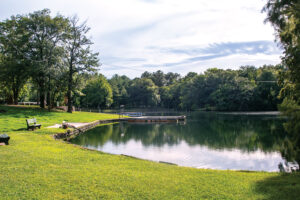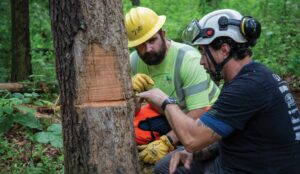
Wind energy development in the United States is rushing past recent growth records. In 2011, 6,819 megawatts of generating capacity were installed; in 2012, that figure jumped to more than 13,000 MW, according to the American Wind Energy Association. In total, the U.S. boasts more than 60,000 MW of wind power capacity.
Since 1 MW powers 750 to 1,000 average homes, more than 45 million American homes could be powered by wind. We say “could be” because wind doesn’t blow constantly. We can’t rely completely on this growing power source, but it’s a great tool to have as part of a balanced generation fuel mix.
The industry boomed thanks to federal subsidies for construction of wind farms, sharp drops in production costs, and rural economic development projects.
Wind power is often a natural fit for electric cooperatives. Co-op service territories tend to encompass rural areas supporting wind energy development. Fifty electric co-ops either own wind turbines or buy output from wind farms, amounting to 4.3 GW, or about 9 percent of the U.S. wind generating capacity. Of course, states in the Upper Midwest and Great Plains yield more opportunity for wind power than most others.
In Illinois one co-op led the way installing one of the first utility-owned wind turbines. In fact, for its leadership and innovative wind project, Illinois Rural Electric Cooperative, Winchester, won one of the first U.S. Department of Energy Wind Cooperative of the Year Awards in 2005. The 1.65 MW turbine has been a great education tool for the co-op community and now the co-op is cooperating with the Illinois Department of Natural Resources to study the impact of the wind turbine on the area’s bat population.
Two other Illinois co-ops, Adams Electric Cooperative, Camp Point, and Rural Electric Convenience Cooperative, Auburn, have also installed utility grade wind turbines and connected them directly to their distribution grid that feeds the wind energy to their co-op members.
Unfortunately, the primary federal subsidy for wind power project development—federal production tax credits—is available only to for-profit electric utilities. That means not-for-profit electric cooperatives can’t take advantage of the subsidies. Co-ops initially had two workarounds. Clean Renewable Energy Bonds helped co-ops add wind capacity until they expired at the end of 2010. Co-ops also formed taxable entities eligible to receive payments covering 30 percent of a project’s capital costs through the U.S. Department of Treasury Section 1603 tax grant program, but that expired at the end of 2011.
Now, to get the best deals, electric co-ops must sign agreements to buy electricity from private-sector wind projects or arrange long-term leasing agreements with a developer that qualifies for the federal incentives, rather than developing wind projects on their own.
For example, three generation and transmission cooperatives serving Illinois co-op members purchased 40 MW of wind energy from the Pioneer Trail Wind Farm east of Paxton, Ill. The three member-owned G&Ts, Prairie Power, Inc., Southern Illinois Power Cooperative and Wabash Valley Power Association entered into an 18-year power purchase agreement with E.On Climate & Renewable North America, Inc. The agreement was coordinated through the National Renewables Cooperative Organization, which was formed to promote and facilitate the development of economically viable renewable energy resources for its member cooperatives across the United States.
“Electric cooperatives are no strangers to innovation,” says Duane Noland, President/CEO of the Association of Illinois Electric Cooperatives. “As technology advances, they will work hard to add renewable resources to their energy portfolio. Illinois co-ops are taking a conservative, diversified and long-term approach to the energy portfolio supplying the co-op members at the end of the line.”








